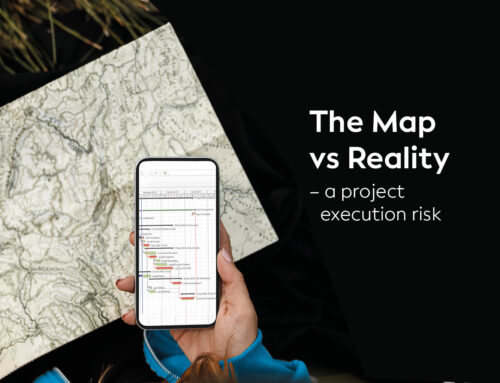Identifying delays
The identification and assessment of delay entitlement can be difficult and time- consuming. When any degree of complexity is introduced to the mix, it can become particularly difficult for project staff who are often overworked dealing with site issues and other project demands, and who may also be untrained in forensic analysis or programming skills. This often manifests itself as a poor strike rate in achieving extensions of time entitlements by contractors. When the employer’s team lacks these skills and awareness, the risk is created of granting inadequate or excessive extensions of time to contractors. To be successful, a time extension claim should adequately establish causation and liability and assist in demonstrating the extent of time-related damages or disruption costs experienced as a direct result of the delay events relied upon. The purpose of delay analysis is to satisfy the causation requirement in such a way that it can be used to assess the resulting damages.
Delays may be categorised as excusable, non-excusable, compensable and non- compensable. When demonstrating that a delay is both excusable and compensable, the delay must be shown to be critical, by reference to a reliable critical path analysis. The carrying out of a successful delay analysis requires the preparation of a reliable as-planned programme and an accurate as-built programme. The effectiveness of delay analysis techniques can be greatly increased when it can be demonstrated that the as-planned programme was reasonable. The as-planned or baseline programme is useful contemporaneous evidence of a contractor’s original intentions and should serve as the starting point when identifying delays. Unfortunately, there are many ways in which as-planned and progress programmes can be manipulated.
Analysing delays
The effect of delay and disruption can be identified and assessed using several dissimilar techniques. There is much discussion about the various approaches to delay analysis along with explanations as to why it should not be surprising when two opposing programming experts can apply the same technique and produce widely varying and inconsistent conclusions. Delay analysis techniques are known by many generic titles and each method can be applied in several ways. The most widely known methods of delay analysis are subject to frequent misuse, but the name applied to a technique is not as important as the application of the chosen method. All commonly applied forensic delay analysis techniques generally fit within one of the following primary categories: impacted as-planned, collapsed as-built (CAB), as-planned versus as-built and time impact analysis (TIA). The ‘windows’ method is also another frequently used technique, using several of the primary methods listed above. The term ‘windows’ simply refers to the period of time being analysed. When key milestones are relied on, the same approach is sometimes referred to as ‘watershed’ analysis.
Each of these primary delay analysis techniques has secondary derivative methods of application, which may be used in prospective or retrospective settings. All of these named techniques are briefly explained below, which also not only explain how to carry out and present several secondary derivative methods but also contrasts the strengths and weaknesses of each method and considers the underlying assumptions the analyst must make when using any of these techniques. The methods discussed below are not exhaustive, but set out a comprehensive summary of the most widely used methods of delay analysis, both in prospective circumstances as well as forensically in dispute forums.
Table 1.1 Categories of delay analysis.
1. Additive methods of delay analysis
Additive modelling approaches are mainly applied prospectively, that is during the course of a project when the full extent of a delay is not yet known. At this stage, any delays to the completion must be projected or forecast, based on the best information available at the time. These approaches rely on either the as-planned critical path method (CPM) logic or the most recently updated, submitted and approved CPM programme. Additive modelling techniques are by their nature a theoretical calculation using information available at the time the event occurs. The ‘cause’ is known, at the time, but the ‘effect’ must be estimated or projected.
Estimating the risk at the time allows the contracting parties to negotiate the effect of the delay event, thus setting a new deadline and price for the remaining work and a new date from which ‘liquidated damages’ can be assessed and recovered by the employer.
Additive methods can be applied to a baseline programme or to a programme representing the status of the project at intermediate points leading up to project completion.
The IAP technique is arguably the simplest form of critical path-based analysis. The SCL Protocol states that:
‘IAP is based on the effect of employer risk events on the planned programme of work. This is thought to be the simplest form of delay analysis using CPM techniques since it involves the least amount of variables. The usefulness of the IAP technique is restricted due to the theoretical nature of the projected delays that are determined using this technique and uncertainty as to the feasibility of the contractor’s as planned programme’. **
The IAP approach has been widely criticised by commentators and courts alike. Yet, it still remains one of the most widely used methods as a first ‘port of call’ due to its simplicity and its ability to demonstrate what ‘would have happened’, assuming the delays modelled (EDE or CDE) were the only delays which occurred (and assuming all else went to plan). However, the theoretical nature of these very assumptions provides the ammunition to call into question the usefulness of the approach. The strengths and weaknesses of the IAP technique are summarised in Table 1.3.
Table 1.2 Strengths and weaknesses of Impacted as Planned
Time Impact Analysis (TIA)
An evolution of the IAP method is known as the ‘time impact analysis’. The AACEI RP-FSA refers to the TIA approach as ‘modelled/additive/multiple base’. The main difference between the IAP and TIA method is the use of ‘multiple base’ programmes in the TIA, as opposed to a ‘single base’ (i.e. the baseline) in the IAP. The SCL Protocol states that the TIA method is the ‘preferred technique to resolve complex disputes related to delay and compensation for that delay’. It also states:
‘Time impact analysis is based on the effect of delay events on the contractor’s intentions for the future conduct of the work in the light of progress actually achieved at the time of the delay event and can also be used to assist in resolving more complex delay scenarios involving concurrent delays, acceleration and disruption. It is also the best technique for determining the amount of extension of time that a contractor should have been granted at the time an employer risk event occurred. In this situation, the amount of extension of time may not precisely reflect the actual delay suffered by the contractor. That does not mean that TIA generates hypothetical results – it generates results showing entitlement’.
The TIA method is an additive and ‘modelled’ technique because it is based on ‘what if’ simulations of various CPM baseline programmes. Similar to the IAP method, the TIA approach consists of the insertion or addition of activities, or fragnets, which represent the employer delay event or contractor delay event into a network analysis model designed to determine the impact to the network.
The TIA methodology differs from the IAP technique because it uses multiple baselines, rather than the original as-planned baseline, to measure the likely impact of delay events. Each base programme is a CPM schedule representing the contractor’s intentions for completion of all remaining work, prior to the insertion of delay events.
When carrying out a contemporaneous TIA, prospectively during the course of the work, the parties will be forced to rely on estimated durations for delay events in the future. When carried out forensically, the parties will have better information regarding the logical sequence in which the delay events were actually carried out, the activities which were truly dependent, and delayed, by them, as well as the actual duration of each delay event. These additional facts must be considered when carrying out a forensic TIA, or the results are likely to be considered too theoretical to determine compensation for prolongation.
3. Collapsed as-built
The collapsed as-built (CAB) approach is another modelling technique which is traditionally carried out on a single-base programme, for example the as-built programme. The CAB relies on a simulation of a ‘what if’ scenario based on a CPM which models not the contractor’s intentions, but rather the contractor’s actual sequences and durations. Whereas the IAP approach is an additive approach, which involves inserting delays into a planned sequence and identifying what ‘would be’ the impact to completion if these delay events were the only change, the CAB is a deductive approach, using exactly the opposite philosophy to that relied on in the IAP and TIA methods. The ‘what if’ questions posed in the CAB method are ‘What if these delay events didn’t occur?’ or ‘When would the project have finished but for these events?’ The approach, while not a prospective method, is just as speculative and theoretical as the IAP and TIA methods, albeit with different sets of weaknesses and layered assumptions. In relation to the CAB method, the SCL protocol states:
‘4.7 Collapsed as-built is based on the effect of employer risk events on the programme of work as it was actually built. Similar to the as-planned versus as-built, the use of this technique is restricted by its inability to identify concurrency, resequencing, redistribution of resources or acceleration. This is particularly the case when the nature of the as-built logic is complex, requiring subjective reconstruction of as-built logic. Where acceleration, redistribution of resources or resequencing has taken place during the course of the works to overcome the effects of events, this form of analysis may produce unreliable results’. **
Table 1.3 Strengths and weaknesses of the collapsed as-built technique.
4. As-built based methods of analysis
What has been described thus far can be referred to as modelled techniques which rely on computer simulations of CPM schedules to calculate precise answers based on a given set of rules or assumptions. The theoretical nature of analysis increases with the complexity of the sequences, the length of the project duration and the number of activities included in the CPM models.
On the other side of the spectrum, the basic methods of analysis include as-built based analytical techniques which do not rely on calculated CPM models. These are referred to as ‘observational’ in the AACEI RP-FSA. On projects where the effects of acceleration (or attempted acceleration) or early completion programmes are at issue, it advisable to apply both a deterministic technique and also an analytical technique which relies solely on as-built data. This provides a tribunal with a range of opinions, based on different assumptions. To prove acceleration, for instance, it is often helpful to demonstrate what the delay ‘would have been’ if it were not for the acceleration. This will require a method which calculates a theoretical impact, as well as one which demonstrates what actually happened, to establish entitlement.
There are many approaches which can be used when quantifying the impact of events when relying on as-built data. The Forensic Schedule Analysis (FAS) identifies four observational method implementation protocols (MIPs), as listed below:
- Observational/Static/Gross (MIP 3.1) Observational/Static/Periodic (MIP 3.2)
- Observational/Dynamic/Contemporaneous As-Is (MIP 3.3)
- Observational/Dynamic/Contemporaneous Split (MIP 3.4)
5. Total time assessments (observational/static/gross)
In its simplest form, an APAB analysis compares the planned duration with the actual duration of a project and asserts the difference as being both excusable and compensable. This is, in effect, a global claim. When advancing a global time claim (total time), a similar burden of proof must be met as that required for a total cost claim. The approach must demonstrate that:
- The as-planned ‘baseline’ schedule was reasonable.
- The contractor’s performance was reasonably efficient.
- The contractor did not contribute to critical delay.
- The difference between the as-planned and as-built durations is entirely attributable
- to excusable events.
- The complexity of the project makes it impossible or highly impractical to account for
- the time impacts of the other party/parties in any other way
Table 1.4 As-built critical path summary table.
This is referred to as the Observational/Static/Gross method in the RP-FSA. The process of carrying out an as-planned versus as-built programme analysis is as follows:
- Establish a contractually compliant as-planned programme for analysis. It is not essential that this programme indicates float or identifies critical paths.
- Establish a properly reconstructed as-built programme to the same or higher level of detail as the as-planned programme.
- Add into the as-built programme potential delay events which represent varied or additional work, key milestones (which may not have been included in the as-planned programme) and significant events which assist in demonstrating the chronology lead- ing up to delays relied on.
- Deduce at least one ABCP through the as-built programme. This is potentially the most subjective area of the APAB analysis. Unless monthly CPM updates were kept and relied on throughout the project, or the critical path through the works is other- wise obvious and capable of being represented on a summary level programme, with activities grouped into a few bars, it is likely that the ABCP will be challenged in whole or part. In order to deduce an ABCP, the analyst will have to:
- From time to time, review correspondence, and weekly or monthly reports, to determine where the contractor’s focus/effort was concentrated.
- Apply experience to the type of construction and logical dependencies between tasks to interpret the required sequences followed.
- From time to time, review plant and labour returns to determine where key plant or trades were utilised.
- Review as-built start and finish dates between inherently dependent activities. The normal convention is to interpret the critical path as having shifted to a successor activity once the successor commences. (The predecessor is no longer critical once the successor is able to commence, even if the predecessor is not 100% complete.) If this convention is not followed, proper explanations should be provided.
- Trace additional critical paths through the works, testing conclusions to eliminate unlikely critical paths, or to determine if there was more than one reliable critical path competing for dominance through to completion.
6. As-planned versus as-built windows analysis
The as-planned versus as-built (APAB) windows analysis is another analytical approach, referred to in the AACEI RP-FSA as ‘3.2 Observational/Static/Periodic’. This approach is addressed in the SCL Protocol simply as the ‘As-Planned versus As-Built approach’. This method follows a similar approach as set out above for the APAB approach, with the basic difference being that the delay variances, which can be measured at the project level or activity level, are summarised at the end of each ‘window’ selected by the analyst.
The beginning and end of each ‘window’ is usually defined by:
- Key milestone events which occurred during the course of the works.
- Periods when the contractor’s intentions, logic or methodology changed (e.g. attempted acceleration or changed conditions).
- Periods when snapshots of progress were recorded contemporaneously, allowing earned value analysis calculations within each window.
- Key changes, suspensions or delays having been experienced.
Table 1.5 Strengths and weaknesses of the as-planned versus as-built technique.
The strengths and weaknesses of this method are similar to those for the as-planned versus as-built approach. One of the main differences is that this method has the ability to isolate and analyse periods when the contractor changed its intentions at some time after the issue of an as-planned schedule; thus, it can explain the influence of delaying or disrupting factors in ‘windows of time’. Both the ‘activity level variances’ method and ‘windows level variances’ can demonstrate periods of achieved acceleration, as measured against the as-planned intentions.
7. Contemporaneous windows analysis
A technique which relies on the analysis of contemporaneous progress information is considered to be dynamic because it considers the dynamic nature of the critical path. The as-built critical path of a programme shifts from time to time for many reasons, including:
- Variations from planned (or remaining) durations due to actual progress
- Variations from planned (or remaining) durations due to delay events
- Changes to planned (or remaining) durations due to added or deleted work scope
- Out-of-Sequence working due to a variety of reasons (e.g. changed intentions, varied
- scope, late design information, unforeseen conditions, plant breakdowns and access
- restrictions)
- Changed logical relationships due to a variety of reasons (see above).
The method is observational because it does not require or rely on a base CPM model which calculates delay based on the addition or extraction of EDE or CDE. The approach relies on the rationalisation of changes and variances which are observed in the contemporaneous programme updates.
Some employers prefer this method of delay analysis because it uses contractor information and relies on an as-built critical path to demonstrate the actual effect of delays. Equally some contractors do not like this approach because it can hide the impact of concurrent delays or events, such as design activities, which are not adequately modelled in the as-planned construction master programme (CMP) or progress updates. This method is the preferred method by the authors when contemporaneous updates are available. Performing ‘float mapping’ exercises on recreated or modified contemporaneous programmes should be avoided.
8. Month-to-month update analysis
A similar method to the ‘contemporaneous windows analysis’ is the ‘month-to-month update analysis’; this is a method which discretely determines the loss/gain experienced due to both progress achieved/not achieved and programming revisions made by the contractor. This method identifies and isolates any programming revisions made by the contractor from update to update to determine the additional loss or gain achieved by those revisions. This method is referred to as the ‘Observational/Dynamic/ Contemporaneous Split’ in the AACEI RP-FSA. The terms ‘observational’, ‘dynamic’ and ‘contemporaneous’ are familiar to the reader by now. The added term ‘split’ refers to a process described in the RP-FSA as ‘bifurcating’. This approach allows the isolation of any gains (mitigation) or losses (delays) due solely due to progress achieved, as opposed to any gains or losses due to revisions to the schedule. These other revisions, unrelated to the progress achieved, might include:
- Increased or decreased activity durations
- Amended, added or deleted logical relationships
- Amended, added or deleted constraints
- Increased or decreased leads or lags
- Added or deleted activities
When deriving the as-built critical path, it is important to ensure that the float values of the activities which are assessed as driving are directly related to the chain of events on the longest path to completion. Constraints such as ‘zero total float’, ‘must start’, or ‘must finish’ dates will have the effect of inhibiting the programme from calculating a true float path when those constraints fall on either the path with the least float or the longest path to completion.
Summary
Forensic delay analysis techniques generally conform to one of four primary categories, namely impacted as planned (IAP), time impact analysis (TIA), collapsed as built (CAB), and as planned versus as built (APAB). These primary categories have secondary derivatives and can be used in a number of approaches including additive, subtractive and analytical. The techniques reviewed in this article are not exhaustive, but set out a comprehensive summary of the most widely used methods of delay analysis, both in prospective circumstances as well as forensically in dispute forums.
Written by Anthony Caletka
References:
Keane, P. J., & Caletka, A. F. (2015). Delay analysis in construction contracts. Wiley Blackwell.
**Society of Construction Law Delay and Disruption Protocol, October 2004 reprint
Follow us for more!
Get the expert edge
Please add your details below and we’ll be in touch as quickly as possible





